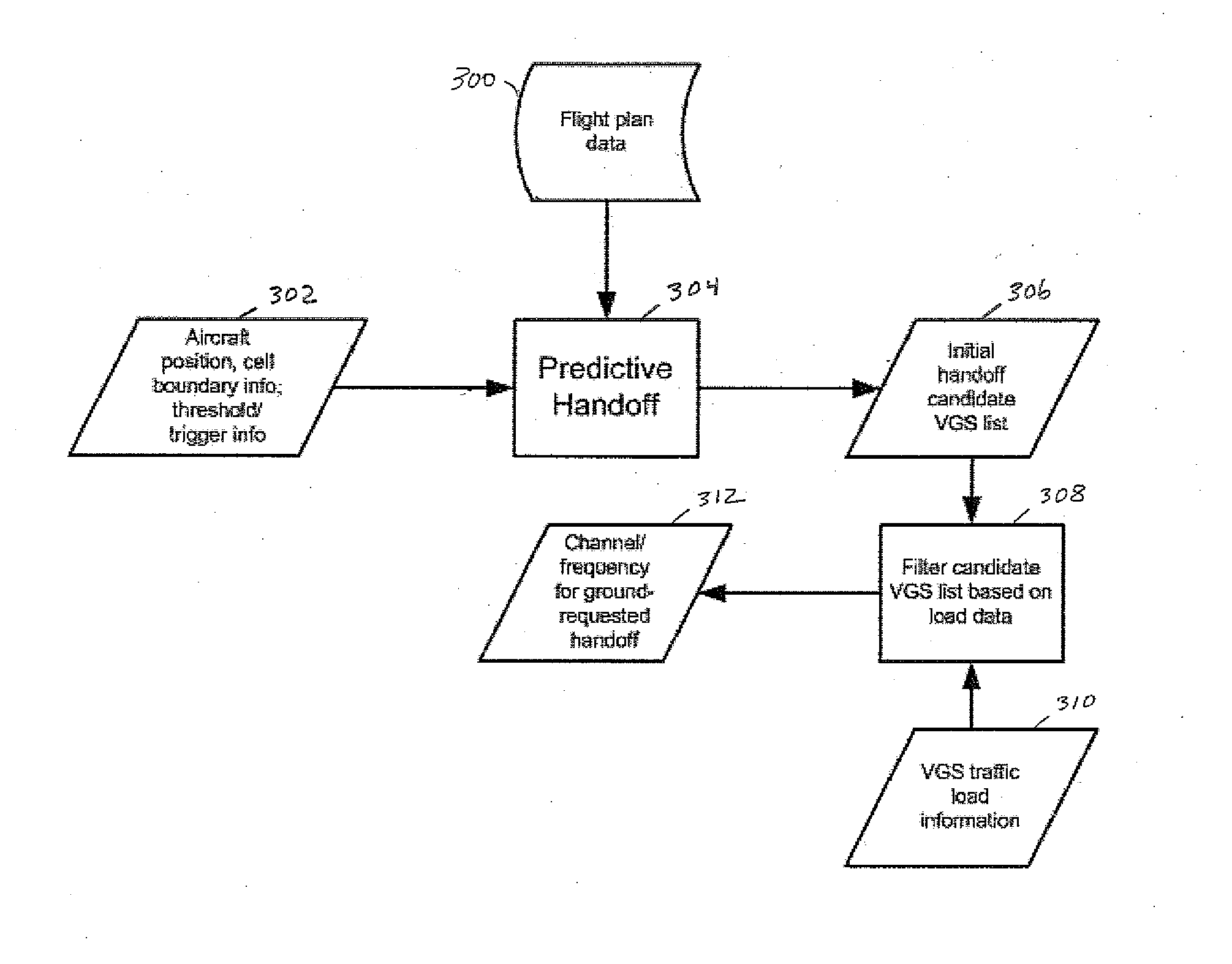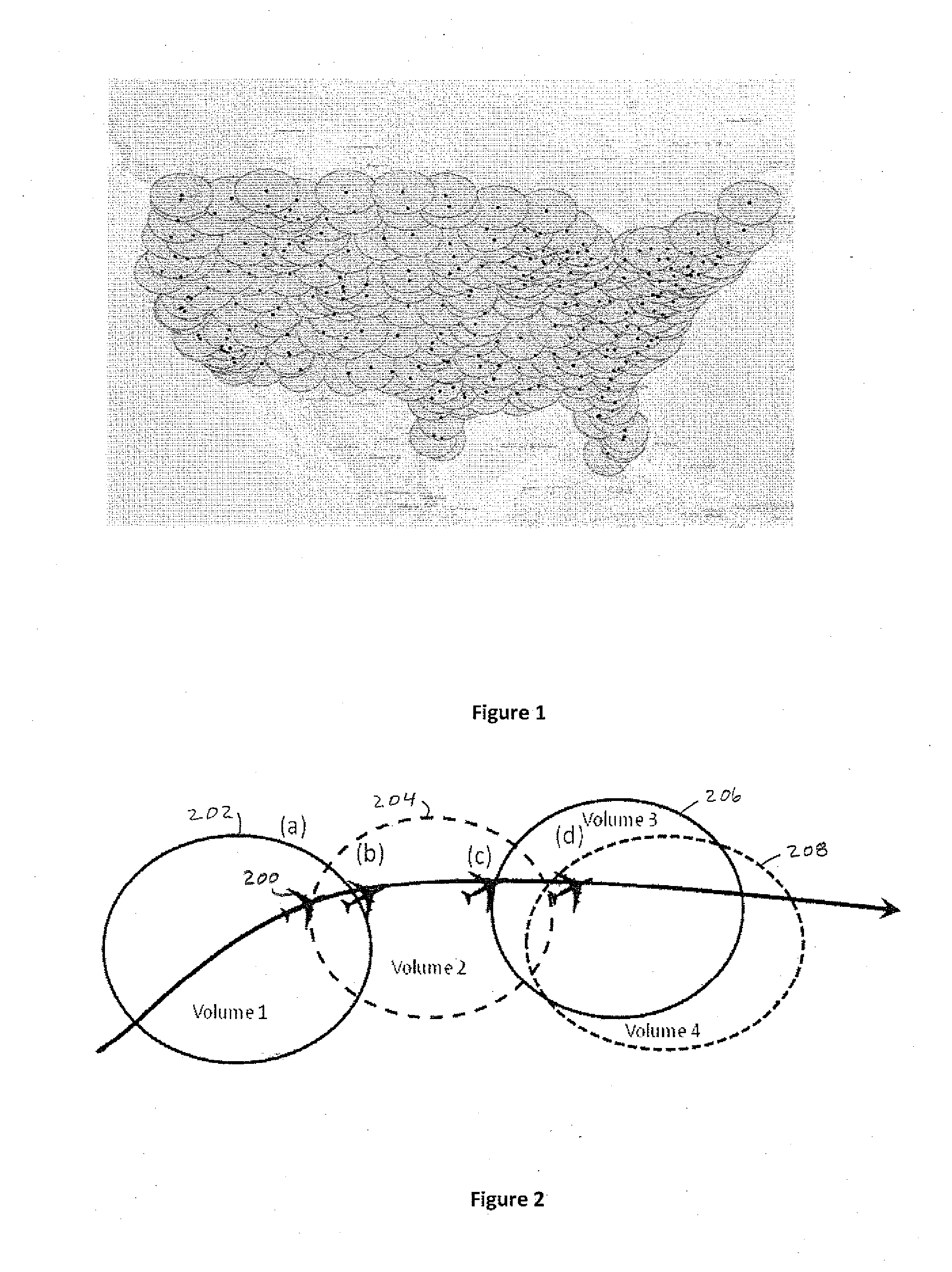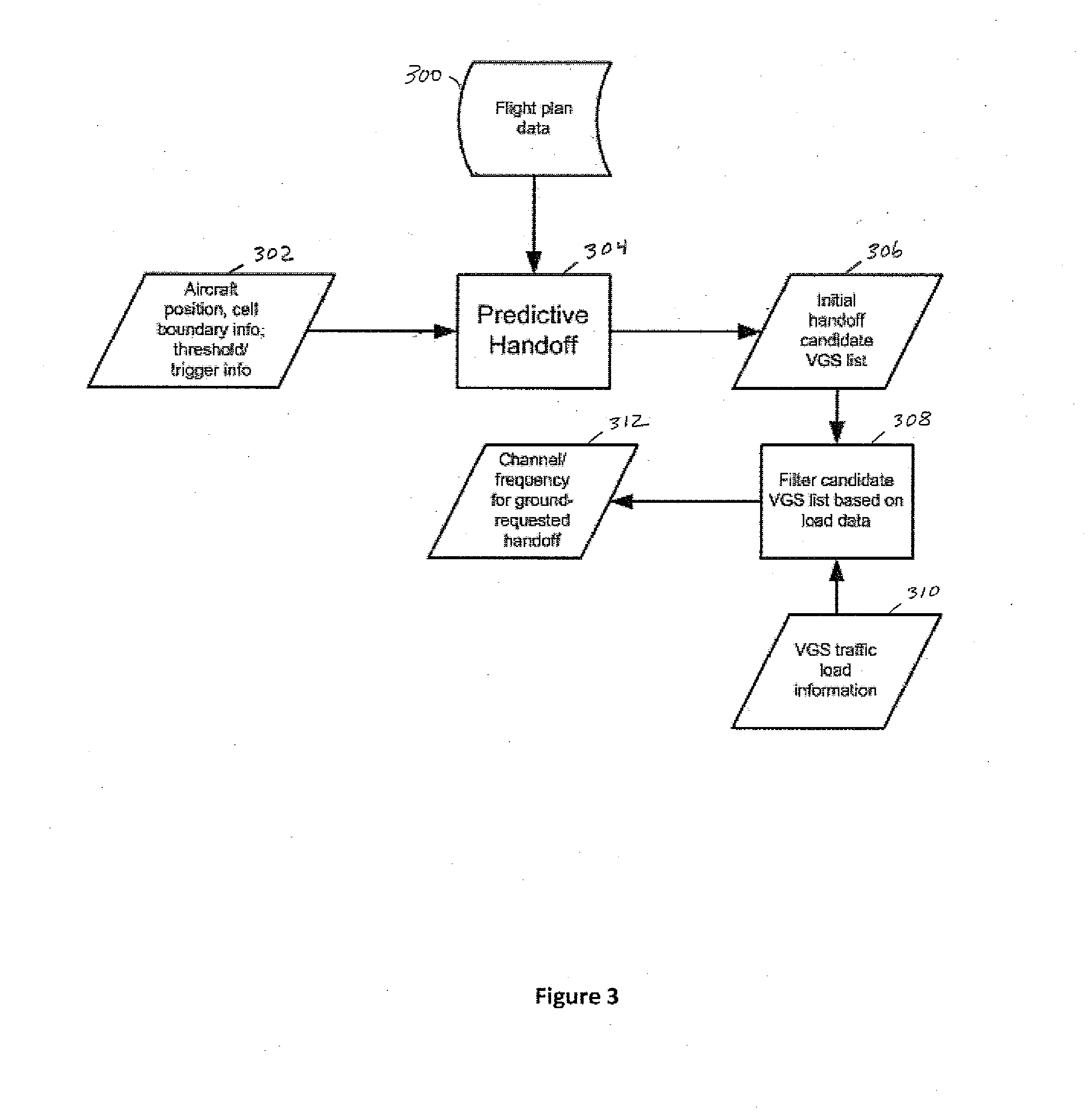System and Method for Load Balancing and Handoff Management Based on Flight Plan and Channel Occupancy
- Summary
- Abstract
- Description
- Claims
- Application Information
AI Technical Summary
Benefits of technology
Problems solved by technology
Method used
Image
Examples
Embodiment Construction
[0041]As mentioned above, in many parts of the airspace over CONUS, an aircraft has acceptable signal strength to several VGSs. Based on the current methods outlined in the VDL-2 specifications, the aircraft will typically choose the VGS with the strongest signal. In a network with non-uniform loading of VGSs, this is not always the choice that will lead to the best overall link performance in terms of packet latency.
[0042]Even when the p-persistent Carrier Sense Multiple Access (CSMA) protocol used by the VDL-2 standard is working perfectly (without hidden terminals), as the number of nodes trying to access the ground station increases, the throughput to that VGS decreases as described in A. S. Tanenbaum, Computer Networks, 3rd Edition. Upper Saddle River, N.J.: Prentice Hall PTR, 1996, pp. 251-254. Hidden terminals are present in these networks since adjacent VGSs can rarely hear each other due to the large physical separation, while aircraft can hear many of these VGSs. Presence ...
PUM
 Login to View More
Login to View More Abstract
Description
Claims
Application Information
 Login to View More
Login to View More - R&D
- Intellectual Property
- Life Sciences
- Materials
- Tech Scout
- Unparalleled Data Quality
- Higher Quality Content
- 60% Fewer Hallucinations
Browse by: Latest US Patents, China's latest patents, Technical Efficacy Thesaurus, Application Domain, Technology Topic, Popular Technical Reports.
© 2025 PatSnap. All rights reserved.Legal|Privacy policy|Modern Slavery Act Transparency Statement|Sitemap|About US| Contact US: help@patsnap.com



